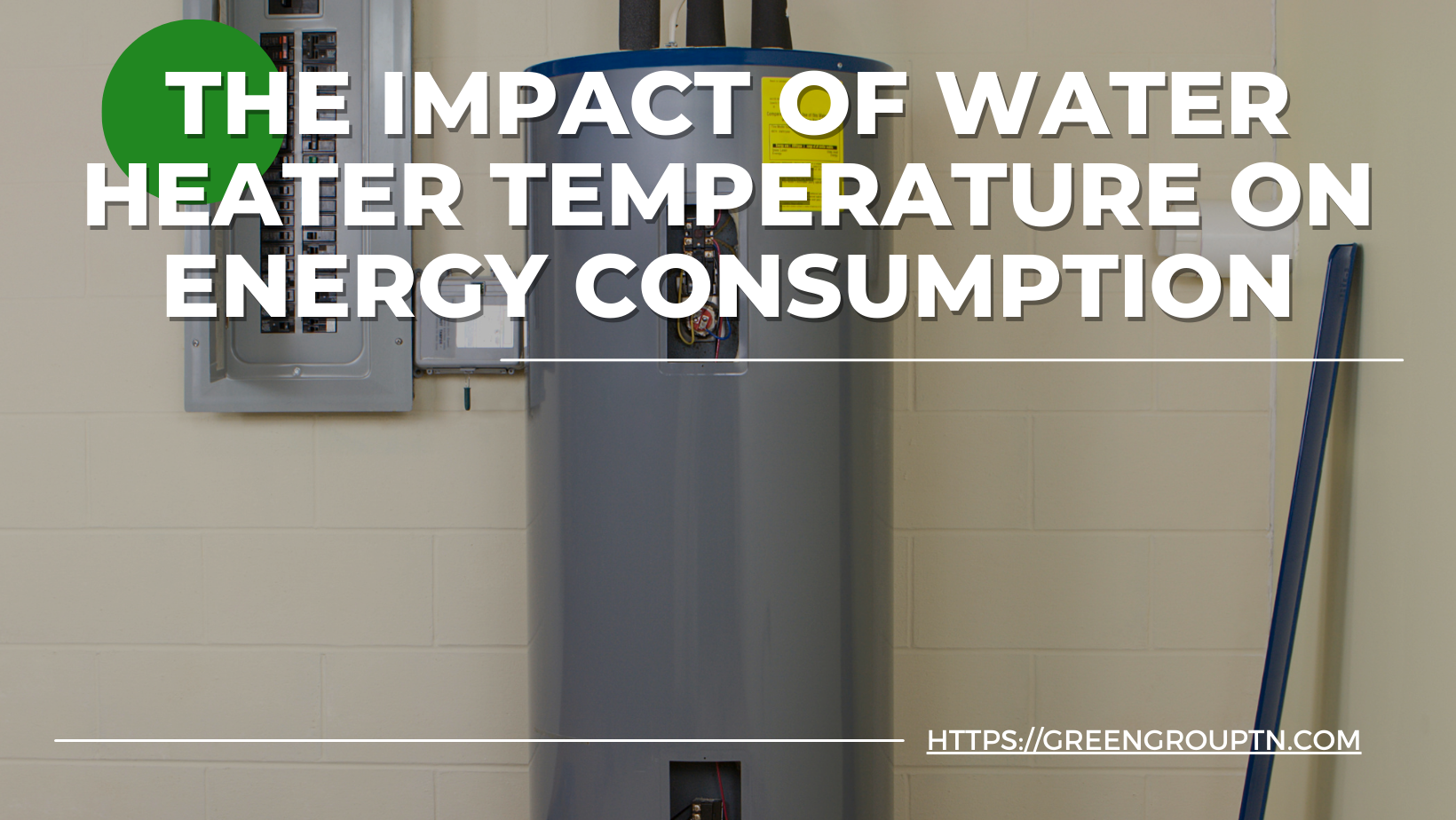At Green Group, we are committed to helping you manage your household’s energy consumption effectively, and a key element in this endeavor is understanding the impact of water heater temperature. While many homeowners focus on the energy use of heating, cooling, and lighting, the water heater often runs unnoticed, yet it can account for up to 25% of your home’s annual energy usage. By learning how water heater temperature affects energy consumption and how to adjust it, you can achieve significant savings and enhance safety in your home.
Understanding the Energy Consumption of Water Heaters
Most homes today use storage tank water heaters, which maintain a large tank of water at temperatures typically ranging from 120°F to 140°F. Each time hot water is used, cold water enters the tank, lowering the overall temperature and prompting the heater to cycle on and reheat the water. This cycle can lead to substantial energy consumption, primarily due to standby heat loss—the heat escaping through the tank’s walls even when no hot water is drawn. The higher the temperature setting, the more often the heater cycles, increasing energy use.
The Financial and Environmental Impact of Water Heater Temperature
Maintaining a water heater at a higher temperature may seem convenient, but it can significantly affect your energy bills and the environment. Lowering your water heater’s thermostat by just 20 degrees can reduce energy consumption by up to 10%, translating to considerable savings over time. Environmentally, reducing energy use helps lower your carbon footprint, as it decreases the demand for energy generated from fossil fuels, contributing to broader climate change efforts.
How to Safely Adjust Your Water Heater Temperature
Optimizing your water heater temperature is straightforward and can lead to immediate benefits. Here’s how to do it safely:
-
Measure the Current Temperature: Use a thermometer at the farthest tap from the heater to check the current water temperature, which may differ from the thermostat setting.
-
Adjust the Thermostat: For electric heaters, shut off the breaker first, then adjust the thermostat, typically located near the tank’s bottom, to 120°F. For gas heaters, adjust the thermostat dial on the gas valve.
-
Reassess and Adjust: After a few hours, measure the water temperature again and fine-tune the thermostat if necessary.
-
Mark the New Setting: Once satisfied, mark the thermostat to easily revert to the setting if needed.
-
Lower When Away: If you’re away for an extended period, consider turning the thermostat to the lowest setting or off to prevent unnecessary energy use.
Benefits of Lowering Your Water Heater Temperature
Setting your water heater to 120°F offers multiple benefits beyond energy savings:
-
Enhanced Safety: Water at 140°F poses a scalding risk, especially for children and the elderly. Reducing it to 120°F minimizes this risk while meeting household needs.
-
Reduced Mineral Buildup: Lower temperatures slow the accumulation of calcium and magnesium, extending your water heater’s life and minimizing maintenance.
-
Optimized Appliance Performance: Most modern dishwashers operate efficiently at 120°F, though some older models may need higher temperatures for optimal cleaning.
-
Health Risk Mitigation: While lower temperatures might increase legionella bacteria growth, 120°F is safe for most households. If higher temperatures are needed for health reasons, consider installing mixing valves to prevent scalding.
Finding the right balance between efficiency, safety, and convenience is crucial when managing your water heater temperature. By lowering the thermostat to 120°F, you can achieve significant energy savings, reduce your environmental impact, and protect against scalding and mineral buildup.
We want to help you optimize your water heater for maximum efficiency and safety. Whether adjusting your water heater temperature, installing energy-efficient appliances, or performing routine maintenance, we offer professional guidance and support.
Call us today and schedule an appointment. Additionally, for more information on energy efficiency and safety, consider exploring resources like the U.S. Department of Energy’s Energy Saver guide. Let Green Group assist you in making your home more energy-efficient, safe, and comfortable.

